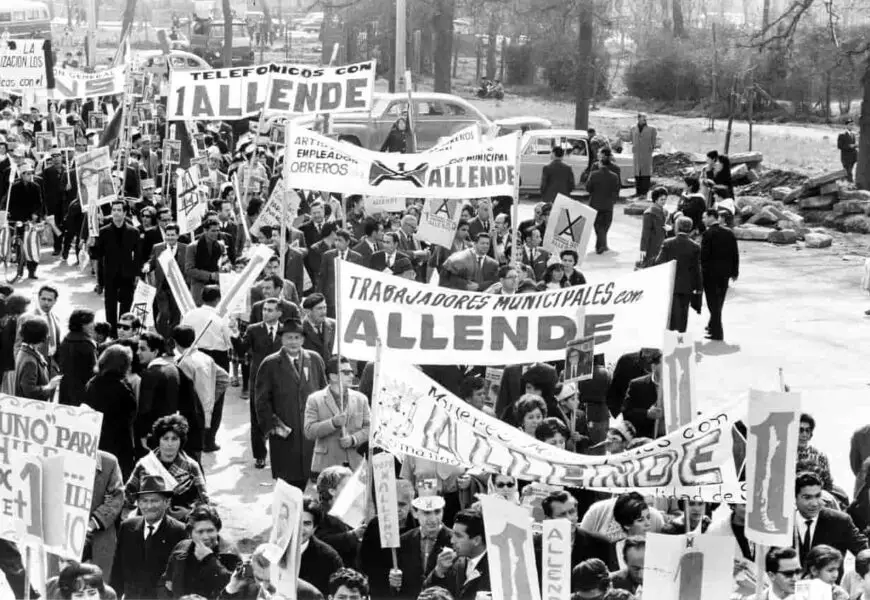The Great Depression 1929 to 1939, stands as the most protracted and severe economic recession of the contemporary era. It began in the United States after millions of investors were wiped out in the October 1929 stock market collapse. Consumer spending and investment declined over the subsequent several years, resulting in precipitous declines in industrial output and rising unemployment rates due to the layoffs of employees by failing businesses.
At the height of the Great Depression in 1933, approximately 15 million Americans were without employment, and nearly half of the nation’s banks had failed. The crisis precipitated severe repercussions on a global scale, encompassing elevated levels of unemployment, deflation, and financial crises in numerous nations. The gold standard, which tied currencies to gold and increased the severity and duration of the Great Depression in many countries, contributed to deflationary pressures.
The societal repercussions of the Great Depression were profound. As a consequence, numerous government interventions and fiscal stimulus schemes were put into effect, most notably in the United States through the New Deal initiative of President Franklin D. Roosevelt. Its objectives were to revive the economy and offer assistance to the unemployed.
Frequently, the commencement of World War II is correlated with the conclusion of the Great Depression, as the latter stimulated economic activity by mobilizing nations for conflict. Nonetheless, the trajectory towards recuperation differed considerably among nations. The Great Depression had an enduring effect on the global economy and society, fundamentally altering economic policy and theory.
Causes of the Great Depression
A multitude of factors, not a single cause, contributed to the Great Depression, a worldwide economic crisis that spanned from 1929 to 1939. Among the most significant contributors to the Great Depression were the following:
- The 1929 Stock Market Crash: Constantly credited with being the catalyst for the Great Depression, the October 1929 stock market collapse precipitated an economic upheaval characterized by enormous losses for investors and a precipitous decline in consumer confidence.
- Defective Banks: In the aftermath of the stock market collapse, numerous banks encountered runs, which transpired when irate depositors systematically retracted their funds, precipitating a deluge of bank failures. The consequence was a significant decline in the money supply, which had an adverse effect on both business investment and consumer expenditure.
- Decrease in Purchasing Across the Board: In response to employment losses or the threat of job loss, consumers reduced their overall expenditure. A pernicious cycle ensued as a result of this decline in production and subsequent unemployment; consumption had decreased.
- The impact of American economic policy on Europe: The implementation of the Smoot-Hawley Tariff in 1930, which levied substantial tariffs on imported products, adversely affected international trade. This resulted in a decline in trade with Europe, an economic bloc that was already grappling with its own challenges and the post-World War I era.
- Drought Circumstances: The Dust Bowl, an extreme drought that struck the Midwestern region of the United States during the 1930s, had a profound impact on agricultural output, precipitating an additional decline in the economy, especially in rural communities.
- Price Decreases and Overproduction: In the years preceding the Great Depression, the agricultural and manufacturing sectors experienced substantial overproduction. Prices plunged in response to a decline in demand, but many farmers and businesses continued to struggle financially because their obligations remained at pre-depression levels.
- In the beginning, there was a dearth of governmental intervention in the economic sphere. The banking system was not stabilized by the Federal Reserve, and the timely implementation of policies intended to support the economy was lacking.
- International Economic Circumstances: The Great Depression extended beyond the borders of the United States. Europe remained profoundly indebted and had yet to completely recuperate from the repercussions of World War I. The U.S. stock market collapse had a significant impact on the global economy.
- Psychological determinants: A decline in investment and expenditure was a consequence of the generalized lack of confidence in the economy and future. A self-fulfilling prophecy ensued when the apprehension of additional economic difficulties exacerbated the economic recession.
Role of Franklin D. Roosevelt (FDR) in the Great Depression
Franklin D. Roosevelt, often known as FDR, became president of the United States in 1933 and played a pivotal role in tackling the difficulties posed by the Great Depression. His attitude and actions brought about a substantial change in the American government’s involvement in the economy and had enduring effects. Below are many fundamental elements of FDR’s strategy for addressing the Great Depression:
- The New Deal refers to a set of initiatives implemented by President Roosevelt, including programs, public works projects, financial reforms, and laws. Its primary objectives were to alleviate unemployment, revive the economy, and overhaul the financial system. The New Deal included a range of initiatives, including the founding of the Works Progress Administration (WPA), which generated employment via public works endeavors.
- FDR promptly tackled the financial problem as one of his first measures upon becoming president. He proclaimed a “bank holiday,” which included the temporary closure of all banks in order to avoid more bank runs. Subsequently, the Emergency Banking Act was enacted, facilitating the reopening of financially stable banks under stringent terms and establishing the Federal Deposit Insurance Corporation (FDIC) to safeguard bank deposits.
- The Agricultural Adjustment Act (AAA) sought to increase agricultural prices by decreasing surpluses via agricultural adjustments. The government provided financial incentives to farmers to decrease the cultivated land, hence bolstering prices via supply reduction.
- The Social Security Act, implemented in 1935 as part of the New Deal, created a comprehensive program that provided old-age pensions, unemployment insurance, and welfare assistance for those with disabilities and impoverished children.
- The New Deal implemented measures to oversee the stock market, particularly through the Securities Act of 1933 and the Securities Exchange Act of 1934. These actions resulted in the establishment of the Securities and Exchange Commission (SEC) to supervise the stock market and prevent misconduct in stock sales and corporate reporting.
- The Wagner Act of 1935 enhanced labor relations by guaranteeing workers’ entitlement to form labor unions and engage in collective bargaining.
- Roosevelt’s Fireside Chats: Roosevelt adeptly used radio as a means of direct communication with the American populace. His informal radio addresses, known as “fireside chats,” played a crucial role in rebuilding public trust during the economic downturn of the Depression.
- FDR encountered criticism and opposition despite the popularity of many of his measures. There were many who held the belief that he was excessively empowering the government, which caused concern over its potential effects on business and personal liberties. The Supreme Court first deemed some New Deal programs unlawful, resulting in a political conflict about the Court’s makeup.
- Impact of the New Deal: The New Deal had a profound impact on the dynamic between the federal government and American individuals, resulting in a significant shift in their relationship. It laid the foundation for the contemporary welfare state in the United States and reshaped the Democratic Party into a coalition that included labor unions, minorities, and liberals.
Women in the Great Depression
The Great Depression had a substantial influence on women and their societal responsibilities. These are the main components:
- Jobs Challenges: Numerous women endeavored to get jobs in order to provide for their families in light of the prevalent unemployment among males. Nevertheless, women often encountered prejudice and received inferior salaries in comparison to men.
- The economic imperative compelled a greater number of women to enter the labor market, eventually altering cultural perspectives on women’s societal functions. Women were employed in several industries, including domestic assistance, education, and administrative positions.
- Assistance efforts and initiatives during the New Deal: Certain New Deal initiatives, such as the Works Progress Administration (WPA), offered job prospects for women, but often in occupations traditionally associated with women, such as sewing and nursing.
- The period saw a surge in women’s activity and leadership. Eleanor Roosevelt, the First Lady, emerged as a prominent advocate for the rights and well-being of women, youth, and the underprivileged.
- Family and Household Management: Given limited resources, women’s responsibilities in overseeing households and adapting to scarcity became more crucial.
- Rural Women: The Depression had a significant negative effect on rural regions. Women residing in agricultural communities encountered arduous circumstances, particularly in regions affected by the Dust Bowl. Nevertheless, they assumed a vital role in ensuring the survival of their families in these challenging circumstances.
The Great Depression ends as World War II begins.
The transition from the Great Depression to World War II brought about a substantial transformation in the worldwide economic and political environment.
- Economic Transition: The commencement of World War II signified the conclusion of the Great Depression. The war endeavor resulted in a substantial surge in industrial output and notable reductions in unemployment rates in the United States and other participating nations.
- The substantial allocation of government funds towards the war effort reinvigorated businesses that had previously experienced a period of economic inactivity during the Depression. Previously inactive factories were repurposed to manufacture weaponry, vehicles, and other resources for warfare, resulting in the creation of a significant number of employment opportunities.
- The participation of women in labor increased significantly due to the large number of males participating in the war. Women took on duties that were usually performed by men, as shown by the famous character Rosie the Riveter.
- Worldwide Impact: The war had a significant influence on the worldwide economy, resulting in the reorganization of global powers and the emergence of the United States and the Soviet Union as dominant superpowers.
- Post-War Economic Policies: The conclusion of World War II brought about substantial changes in economic policies and institutions. The Bretton Woods Conference was responsible for the establishment of the International Monetary Fund (IMF) and the World Bank, with the aim of achieving stability in the global economy.
- The war and the Depression brought about notable societal changes, such as shifts in views towards women’s roles and the emergence of the Civil Rights Movement in the United States.
The conclusion of the Great Depression and the shift towards World War II had a crucial effect on contemporary economic policies, social roles, and the global political scenario. The war not only brought an end to the economic stagnation of the Depression but also established the foundation for the post-war global arrangement.












[…] New Deal emerged during one of America’s most trying eras, the Great Depression, in the 1930s. Many lost jobs, homes, savings, and wastage; as this crisis took shape, President Franklin D. […]